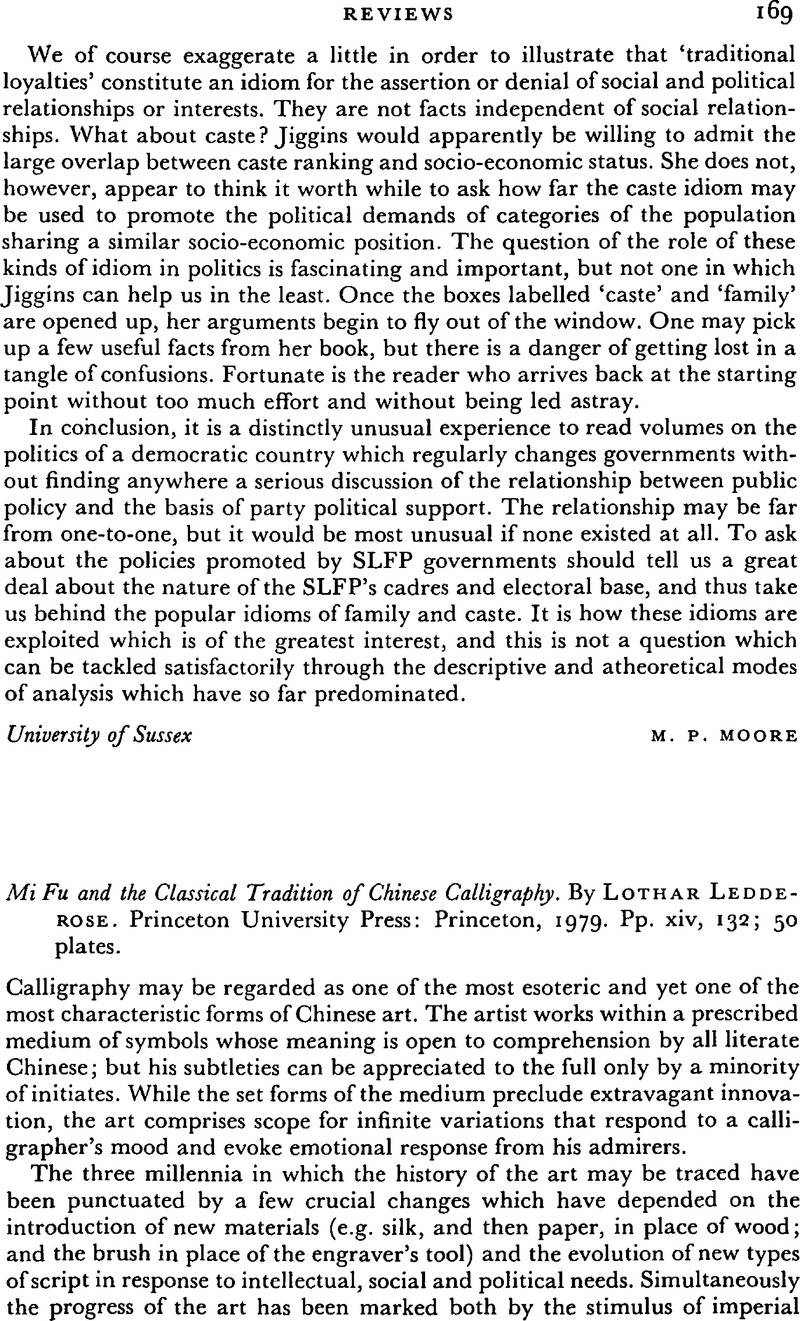No CrossRef data available.
Article contents
Mi Fu and the Classical Tradition of Chinese Calligraphy. By Ledde-Rose Lothar. Princeton University Press: Princeton, 1979. Pp. xiv, 132; 50 plates.
Published online by Cambridge University Press: 28 November 2008
Abstract

- Type
- Reviews
- Information
- Copyright
- Copyright © Cambridge University Press 1981
References
1 Tsuen-hsuin, Tsien, Written on Bamboo and Silk (University of Chicago Press, 1962), pp. 108–9.Google Scholar
2 For details of this material, see Michael, Loewe, ‘Manuscripts found recently in China: a Preliminary Survey’, in T'oung Pao, vol. LXIII, 2–3 (1977), pp. 99–136.Google Scholar
3 See Michael, Loewe, Ways to Paradise (London, 1979), ch. 3.Google Scholar
4 The latest finds from Chü-yen include two strips that are dated, somewhat exceptionally early, at 128 and 119 BC (see Wen wu 1978.1.5).Google Scholar
5 Edouard, Chavannes, Les Documents Chinois découverts par Aurel Stein dans les sables du Turkestan Oriental (Oxford, 1913), pp. 20–1, no. 45.Google Scholar
6 I.e., a return for the receipt and disbursement of grain from an official granary, dated 90–82 BC, and a report of an armed incident, dated 86 BC; see Michael, Loewe, Records of Han Administration (Cambridge, 1967), vol. II, documents W 2 and W 3, Plates 41, 13, 42, 43, 44 and 14.Google Scholar
7 See Shodō zenshū (Heibonsha, Tokyo, 1958), vol. 2. p. 5.Google Scholar
8 E.g. Chavannes (op. cit.), p. 112, no. 518;Google Scholar and Maspero, H., Les documents Chinois de la troisième expedition de Sir Aurel Stein en Asie Centrale (London 1953), no. 142.Google Scholar
9 E.g. the set of 77 strips from Tsakhortei, which date from AD 93 to 95 (see Loewe, Records, Plates 46–47); and the pieces tentatively assembled as members of two registers of official correspondence that are dated AD 90–95 and 89–98 (see Loewe, ibid., documents TD I and X I, Plate 6).
10 See Loewe, M., ‘Some military despatches of the Han period’, in T'oung Pao, vol. LI, 4–5 (1964), pp. 335–4.Google ScholarA recently found example is illustrated in Wen wu 1978.1 Plate 7, and as item no. 63 in the catalogue for the Silk Road Exhibition, held in Tokyo and Osaka, 1979.Google Scholar
11 See Hulsewé, A. F. P., ‘The Shuo-wen Dictionary as a Source for Ancient Chinese Law’, in Studia Serica Bernhard Karlgren Dedicata (Copenhagen, 1959), pp. 239–58.Google Scholar
12 Attention should be drawn to two short articles which concern the tradition of Wang Hsi-chih's calligraphy, published since this review was completed; see Wen wu 1980, no. 3, pp. 47–50 and 51–3.Google Scholar




